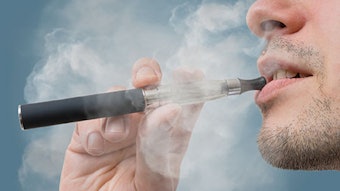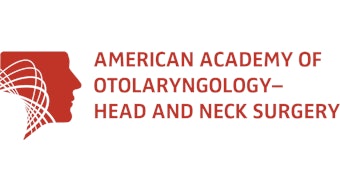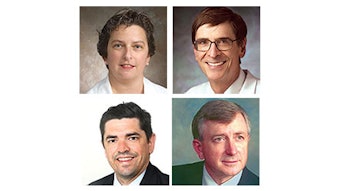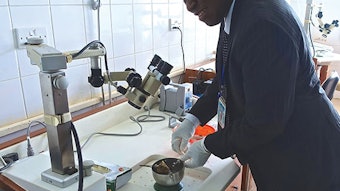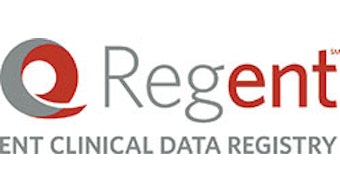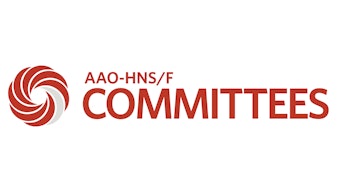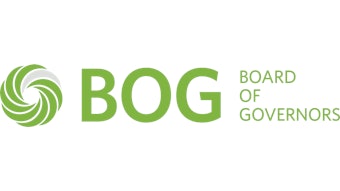From the OREBM Committee: Publications that may change your practice
This month the Outcomes Research and Evidence-Based Medicine Committee focuses on key publications highlighting data regarding management of uncomplicated acute rhinosinusitis (ARS) and recurrent acute rhinosinusitis (RARS) in adults.
David Wang, MD, with Greg E. Davis, MD, Melissa A. Pynnonen, MD, Vikas Mehta, MD, MPH, Giri Venkatraman, MD, MBA, and Jennifer J. Shin, MD, SM
This month the Outcomes Research and Evidence-Based Medicine Committee focuses on key publications highlighting data regarding management of uncomplicated acute rhinosinusitis (ARS) and recurrent acute rhinosinusitis (RARS) in adults.
Lemiengre MB, et al. Antibiotics for clinically diagnosed acute rhinosinusitis in adults. Cochrane Database Syst Rev. 2012;10:CD006089.
This systematic review and meta-analysis of randomized controlled trials compared the efficacy of antibiotics versus placebo in participants with clinically diagnosed ARS (diagnosis was based on signs and symptoms of purulent nasal discharge, complaints for more than seven days, double worsening, and/or pain in the maxillary region, teeth, or when leaning forward). This review focused on patients 18 years of age or older who had clinical complaints of 30 days or fewer. The primary outcomes of interest were the percentages of patients cured at seven, 10, and 14 days. Secondary outcomes included 1) subjective ratings of overall well-being, 2) severity or duration of other clinical symptoms, 3) use of concomitant medications, 4) adverse effects, and 5) clinical failure and serious adverse events. Included studies utilized a variety of antibiotics: amoxicillin, penicillin, doxycycline, azithromycin, or pivampicillin.
Among eight randomized controlled trials enrolling 1,687 patients, 47 percent of all patients had “cure” (symptom resolution) after one week and 71 percent after 14 days. The estimated odds ratio (OR) of cure for antibiotics relative to placebo was 1.25 (95 percent CI 1.02-1.52), with a number needed to treat for benefit (NNTB) of 18.0 patients (95 percent CI 9.7-114.9). No studies found significant differences in overall well-being, clinical symptoms of pain, duration of illness, activity restriction, and use of analgesics or nasal decongestants when comparing antibiotics and placebo. The OR for resolution of purulent discharge for antibiotics versus placebo was 1.58 (95 percent CI 1.13 to 2.22), NNTB 10.8 (95 percent CI 6.1 to 50.8). Of participants who experienced adverse effects, 27.3 percent received antibiotics and 15.0 percent received placebo: OR 2.10 (95 percent CI 1.60 to 2.7). The number needed to treat to harm (NNTH) was 8.1 (95 percent CI 6.0 to 12.5). Of the eight studies included in the primary outcome, one study indicated a 90 percent power to avoid a type II error, three studies indicated an 80 percent power, and the four remaining studies did not describe a power analysis.
This meta-analysis showed that there was a small benefit of antibiotics in patients with clinically diagnosed ARS. Five more patients per 100 that were treated achieved a cure more quickly if they received antibiotics instead of placebo. However, the benefits should be weighed against the risks of adverse effects with antibiotic use (i.e., gastrointestinal manifestations, resistance, secondary infection, increased costs, allergic reaction, etc.). Given the high antibiotic administration rates for ARS and growing antibiotic resistance, the review concluded that antibiotics should be used sparingly for uncomplicated ARS patients during the initial one to two weeks of symptoms. The authors caution against applying these results to children, immunosuppressed patients, and patients with severe disease.
Costa ML, Psaltis AJ, Nayak JV, Hwang PH. Medical therapy vs surgery for recurrent acute rhinosinusitis. Int Forum Allergy Rhinol. 2015 Aug;5(8):667-673.
Whereas for ARS we have the luxury of multiple randomized controlled trials, comparative reports regarding recurrent acute rhinosinusitis (RARS) are far less frequent—even less frequent than for chronic rhinosinusitis. This publication describes an observational study of 220 patients with RARS, who had four to eight episodes per year. Among those treated with oral antibiotics, nasal steroids, and saline irrigations for acute flares, medical therapy alone resulted in improvement in SNOT-22 (sino-nasal outcome test) scores from 48 to 24 (p<0.0001). In this retrospective cohort, those treated with surgery (maxillary antrostomy, partial ethmoidectomy) had even larger improvements at 12 months; SNOT-22 scores improved from 49 to 7 (p<0.0001). Thus, the surgical cohort improved significantly more than the medical cohort (p<0.0001) did, despite similar characteristics at the outset and observed improvement in both groups. The subset of patients that crossed over from the medical group to the surgical group worsened by 15 on their SNOT-22 scores prior to sinus surgery, but subsequently improved postoperatively (p<0.0001).
As this study was a retrospective observational study, there were limitations. The treatment selection was neither randomized nor blinded. Patients’ prior medical treatments were not standardized and could have affected the chosen treatment arm, resulting in the selection bias often inherent to observational studies. In addition, the inclusion criteria were not highly selective; patients were required to have at least four episodes of documented acute rhinosinusitis, but it is unclear if physician documentation of patient-reported infections were included. Patients were required to have at least one infection confirmed by endoscopy or CT. However, the CT criterion was a Lund-McKay score of 1. Considering that a Lund McKay score of 4 is generally considered normal, this is not a restrictive criterion. The report did not detail the type and frequency of medication use in patients at the outset, nor a measure of variance surrounding the mean SNOT-22 scores. Thus, these data have more limitations than the randomized controlled trials included in the Cochrane meta-analysis. RARS has traditionally been a less well-defined entity with more limited data, but it still affects patient productivity1 and quality of life.2 Prospective studies are needed to define the optimal management for patients affected by RARS, which poses unique diagnostic and therapeutic challenges as outlined above. This study highlights these challenges and should engender future studies.
Additional References
- Steele TO, Detwiller KY, Mace JC, Strong EB, Smith TL, Alt JA. Productivity outcomes following endoscopic sinus surgery for recurrent acute rhinosinusitis. Laryngoscope. 2016 May;126(5):1046-1053.
- Poetker DM, Litvack JR, Mace JC, Smith TL. Recurrent acute rhinosinusitis: presentation and outcomes of sinus surgery. Am J Rhinol. 2008 May-Jun;22(3):329-333. doi: 10.2500/ajr.2008.22.3177.

